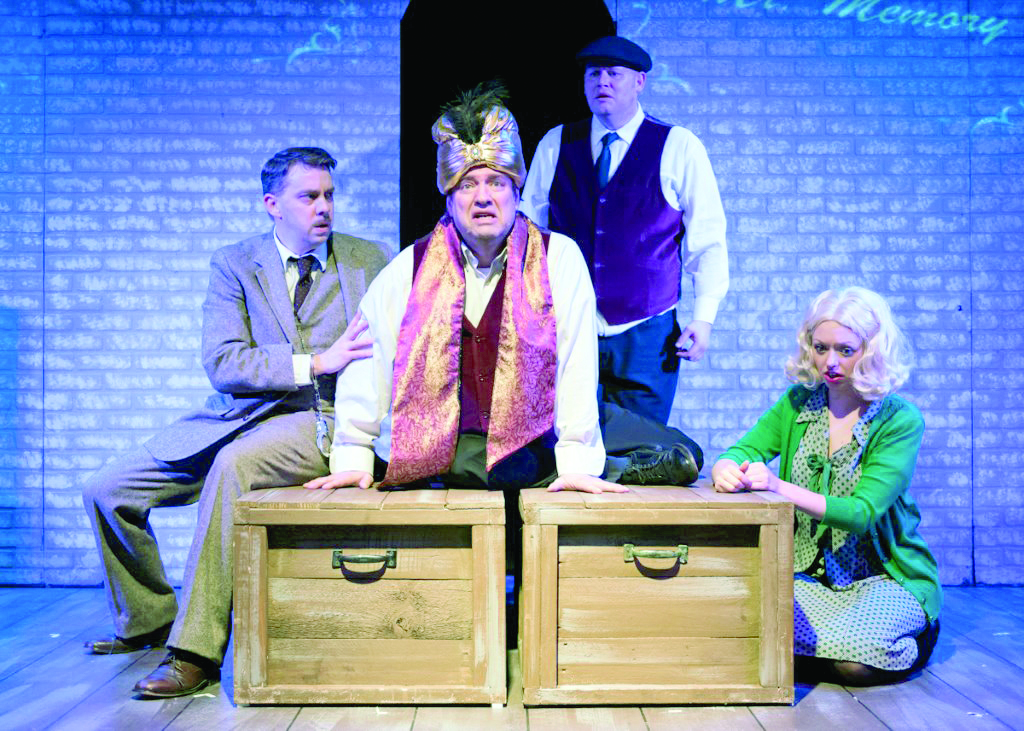Broadway’s ‘Spring Awakening’ revival gives wind mighty voice
By Bob Abelman
NEW YORK — Theater becomes more than just amusement when it speaks for those who are denied a voice because they are perceived as different or live in a time of marginalization.
This is why it’s a big deal when current Broadway productions like “Hamilton,” “Fun Home,” “Allegiance” and “The Color Purple” respectively portray and hire members of the Hispanic, LGBTQ, Asian, and African-American communities.
And it’s a big deal when half the cast in the revival of Duncan Sheik and Steven Sater’s wonderful musical “Spring Awakening” — which opened in September — is comprised of deaf actors playing roles originally conceived as hearing and includes the first wheelchair-bound actor to perform on Broadway.
But nontraditional casting is not what makes “Spring Awakening,” in production at the Brooks Atkinson Theatre, great theater. It’s what director Michael Arden, his team of designers, choreographer Spencer Liff, American Sign Language masters Elizabeth Greene, Anthony Natale and Shoshannah Stern, and the 22-member cast do with this unique opportunity.
Based on the once-scandalous 1891 play of the same name by Frank Wedekind, the original production — which debuted on Broadway in 2006 and earned eight Tony Awards — is set in late-19th-century Germany and tells the cautionary coming-of-age tale of teenagers discovering the tumult of sexual longing. The musical depicts the explosive consequences of being denied proper knowledge by overly protective parents and traditionalist teachers. The revival does the same.
What made the original production particularly powerful was that the adolescents were played by actors in their 20s and their story was told in the hard-rocking musical vernacular of our time, complete with anarchist lyrics and contemporary expletives.
What makes this revival additionally effective is that the characters are not disenfranchised just because they are adolescents, but because many of them are deaf. Adding to their alienation is the banning of sign language in schools in the late 19th century and the perception that the inability or unwillingness to lip-read and mimic speech was a sign of inferiority and failure.
Sign language is interwoven into the show’s storytelling, which offers a marvelous and miraculous ballet of vocal and visual expression that not only makes the musical accessible to a deaf audience but also heightens the emotional resonance of a play already brimming with it.
All the cast members, including former Beachwood resident Alex Wyse, sign throughout the production whether they are deaf or hearing, reinforcing their characters’ collective marginalization in the eyes of the adults (brilliantly portrayed by Russell Harvard, Marlee Matlin, Patrick Page, and Camryn Manheim). But the deaf actors also are shadowed by designated hearing actors, including Clevelander Sean Grandillo, who give voice to their signed dialogue and lyrics in distinctive, character-defining ways.
The magnificent Sandra Mae Frank, who plays the featured role of Wendla, hands a guitar to her vocal counterpart, Katie Boeck, who accompanies her on the opening song, “Mama, Who Bore Me,” and subsequent numbers. In fact, most of the orchestra consists of these instrument-playing vocal counterparts, who remain on the open stage as it changes location by way of subtle introduction of a piece of furniture and dramatic lighting, designed by Dane Laffrey and Ben Stanton.
Daniel Durant, a powerhouse as the socially awkward, rebellious student Moritz, hands his vocal counterpart and confident alter ego, Alex Boniello, a microphone before singing/signing the angry “The Bitch of Living.” When Moritz contemplates suicide later in the play, Durant takes the microphone away from Boniello, creating one of many poignant moments not possible in the original version.
Signing choreography takes other creative forms as well.
When the relationship between Wendla and Melchior — played with intelligence and remarkable charm by hearing actor Austin P. McKenzie — turns romantic and they embrace, his left hand and her right engage in synchronized signing during the song “The Word of Your Body,” which makes it all the more intimate.
And when Wendla’s mother (the superb Manheim), who is hearing, employs broken and inept signs, it adds even more weight to their miscommunication and chasm in understanding.
Kathryn Gallagher is Treshelle Edmond’s voice performer, and the two always stay at a distance to represent how their character, Martha, feels removed from her classmates because of her sexually abusive father.
Over time, once the vocal and visual expression blends and is no longer obtrusive, the most powerful moments in the show come in silence, when the dialogue is performed entirely in ASL so the hearing audience gets to experience the isolating world of these deaf characters.
And when Wendla finds out she is pregnant and asks her mother, “Why didn’t you tell me everything” about sex, she does so in her own voice rather than ASL, which makes the moment even more heartbreaking.
The revival of “Spring Awakening” is most certainly an important piece of storytelling because of its bold casting choices. But it’s the brilliant script and score, innovative staging, and the virtuosity of each and every performer that make it absolutely spellbinding. CV
On Stage
WHAT: “Spring Awakening”
WHERE: Brooks Atkinson Theatre, 246 W. 47th St., New York City
WHEN: Through Jan. 24; soon on national tour
TICKETS & INFO: $59-$249, call 800-276-2392 or visit boxoffice.broadway.com
Bob Abelman covers theater and cultural arts for the Cleveland Jewish News. Follow Bob at Facebook.com/BobAbelman.3.
Originally published in the Cleveland Jewish News in January 2016.
Lead photo: The cast of “Spring Awakening” PHOTO | Joan Marcus











